Most avid television viewers can rattle off a list of their favorite shows. Many of us can take that list and narrow it down to a few classic shows that will stand the test of time to us. Then, there’s that next layer of obsessives who take things a little bit further and examine their favorite seasons of a show. What makes a single season of a series stand out? That’s exactly what we’re going to look at in this new series, “Standout Seasons.” This week, Cat Smith looks at American Horror Story: Asylum.
I miss American Horror Story. Not all of it. My relationship with the AHS seasons was similar to the thing they say about the original Star Trek films: the even-numbered ones were the good ones. Of course, Roanoke messed that up, and I broke up with the show soon after. And while I love Freak Show with all my soul, I don’t think any other season quite measures up to American Horror Story: Asylum in terms of straight-up quality.
Don’t get me wrong, it wasn’t perfect. One of the things I love about AHS is that since each season is its own anthology series, everyone has got the ones that speak to them, and there’s no such thing as “the best one” (though really, try telling that to the Doctor Who fandom when they claim that their favourite is the “best” Doctor). I know my love for Freak Show puts me in the minority. Almost everyone seems to agree with me about Asylum, though.
I’m grateful to Ryan Murphy and Brad Falchuk for creating the show. I’m more grateful that when they got to the second season, the reins were largely handed over to Tim Minear. I’ve loved his work since his Angel days. A Tim-written episode is the high point of any AHS season, and he’s responsible for three in Asylum, including the pilot and the finale. He was also an executive producer, so he pretty much got to drive the bus. The other thing I’m grateful to Ryan Murphy for is his unabashed Jessica Lange fanboy status. He told Entertainment Weekly that “this will really be the Jessica Lange show so I’m very excited about it.” Come to think of it, that’s a large part of why I love Freak Show too—focus on J-Lange. She’s a winning lottery ticket, and Murphy knew it.
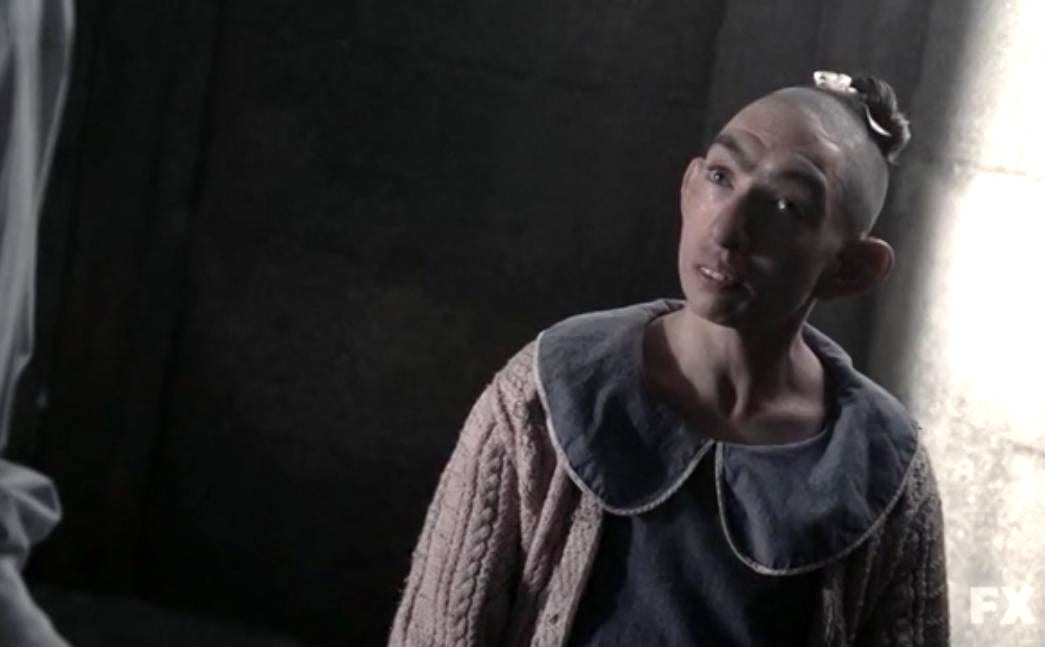
A weird thing about AHS is their season openers. I’m not normally a fan of them, and honestly, Asylum was no exception. I don’t know why, since Minear wrote it and I am definitely a fan of his. I’m guessing it has to do with the world-building, especially in this case, when the show was first establishing itself as an anthology series. We get it, sex and violence. Not going to lie, Asylum raises my feminist hackles more than a little. I think it is supposed to do that. It’s set primarily in 1964, and that era does plenty on its own to punish women for things like their sexuality. The show didn’t need to work so hard to help with that, however. “Welcome To Briarcliff” starts out in the present day, and it’s fair to say that both of the lovers who get the hornies in a derelict madhouse get punished for sex. Fine, that’s one of the rules in any horror movie, but it’s the woman who gets lines like “I’ll let you put it anywhere.” Was that absolutely vital?
One thing about American Horror Story as a whole—the show needed more female writers. Most shows do, but the need really shows in this one. Jessica Sharzer and Jennifer Salt are fantastic, but they needed more. Don’t get me started on Coven, which was femme-centric in concept, but then had a bunch of men trying to figure out how to write that without being clumsy (that thing with the minotaur? Whaaaaaat?).
A large part of the “horror” in here is how awful people are to women. For example, in Asylum, Chloë Sevigny plays Shelley, one of the inmates. She’s there because her husband had her committed as a nymphomaniac. She’s a supporting character and it’s not gone into in depth, but it’s implied that she’s simply more sexually awake than most women in New England at the time. Again, women are punished for sexuality, especially when, like Shelley, they are loud about it. Much of Shelley was written by James Wong. I’m sorry, but Shelley is completely one-dimensional, and Wong is also the guy who went on to give us the minotaur, so no surprise there.
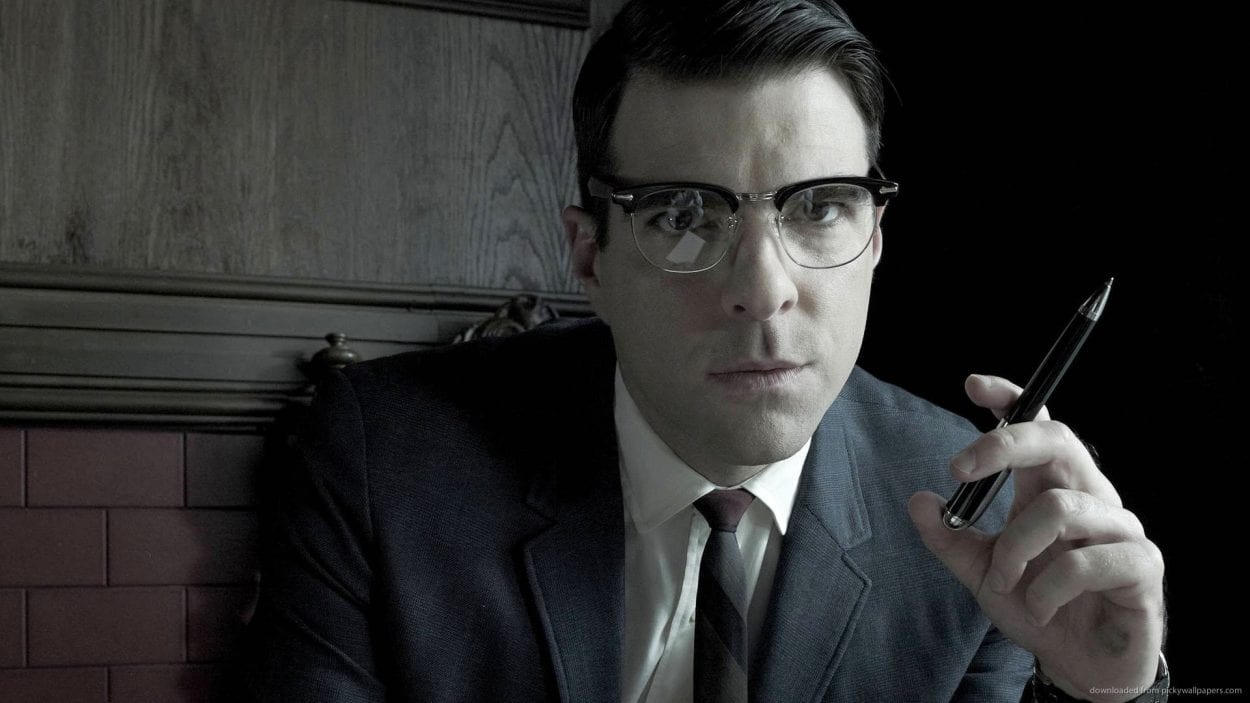
American Horror Story: Asylum does its best to make you pissed off at men, even the ones who are fleshed out and well written. At one end of the spectrum is Zachary Quinto’s Oliver Thredson, a serial killer and psychotherapist (hmm, where have I heard that one before?), and he is wonderfully creepy. The other end of the spectrum is Dylan McDermott’s Johnny Morgan, Thredson’s son, who has both mommy and daddy issues and wants to be a serial killer just like dear old dad. All of his stuff is set in the present day, and honestly, it’s some of the least compelling material in the series. It’s not McDermott’s fault—even as his body count increases, we just don’t care all that much about Johnny.
Ian McShane (Deadwood) will make even the worst things better, and his limited story arc in American Horror Story: Asylum is already pretty great. McShane plays inmate Leigh Emerson, who starts out as Jean Valjean (he stole a loaf of bread), got arrested, and had a prison experience that would rival DeNiro in Cape Fear. When he got out of prison, he then turned into Sam Byck (with a little Dr. Lecter thrown in), and killed 18 people while he was wearing a Santa Claus suit. He is sent to Briarcliff and is treated badly by Sister Jude.
Years later, he corners her in her office, ready to give to her what prison had given him. That scene, by the way, is Wong-written, and in the hands of lesser actors wouldn’t have been nearly as effective. McShane and Lange are both so good, though, that you hardly notice that the dialogue leaves something to be desired. And it’s Ian McShane, so we still kind of love him even when he’s being horrible. We never learn the ultimate fate of Leigh Emerson, except that he escaped from Briarcliff and went on a nun-killing spree. I badly want to connect that to Angelus in some way (he had a thing for nuns when he was evil), but I can’t get the math to work.
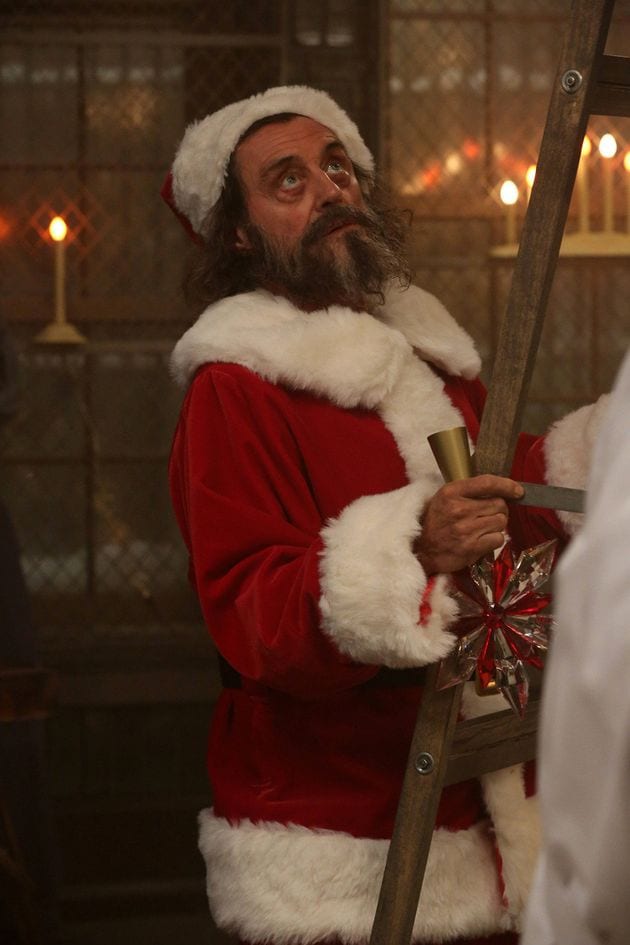
Joseph Fiennes’s Father Timothy is another one of the male characters that I don’t think we’re supposed to like much, most of the time. Sister Jude thinks he is the greatest person in the world, and he fills her head with talk of how, when he rises to prominence in the Church, he will take her with him. Of course, that doesn’t happen, at least not for her. He turns on her and throws her to the wolves. Father Timothy is the human embodiment of the sin of Pride, and I don’t think he even knows how to redeem himself.
He is crucified by Leigh Emerson and raped by Sister Mary Eunice (Lily Rabe)—though she’s possessed by the Devil, so we can’t really blame her—and he grovels to Sister Jude to try and make things right with her, but he doesn’t do that until after his orgasm. When Jude tells him that he needs to kill Mary Eunice in order to free her from the Devil, he finally comes through and does it. Ultimately, he lets Jude down again, leaving her to rot in the asylum as he goes off to New York for his promotion.
It’s a small role, but I love Fredric Lehne as Briarcliff security guard Frank McCann. Frank is a hard-ass, but he’s a good man—one of the few decent men—who does his job and is loyal to Sister Jude. So loyal, in fact, that when he plans to report an accidental shooting to the proper authorities, Sister Mary Satan cuts his throat and blames it on Jude.
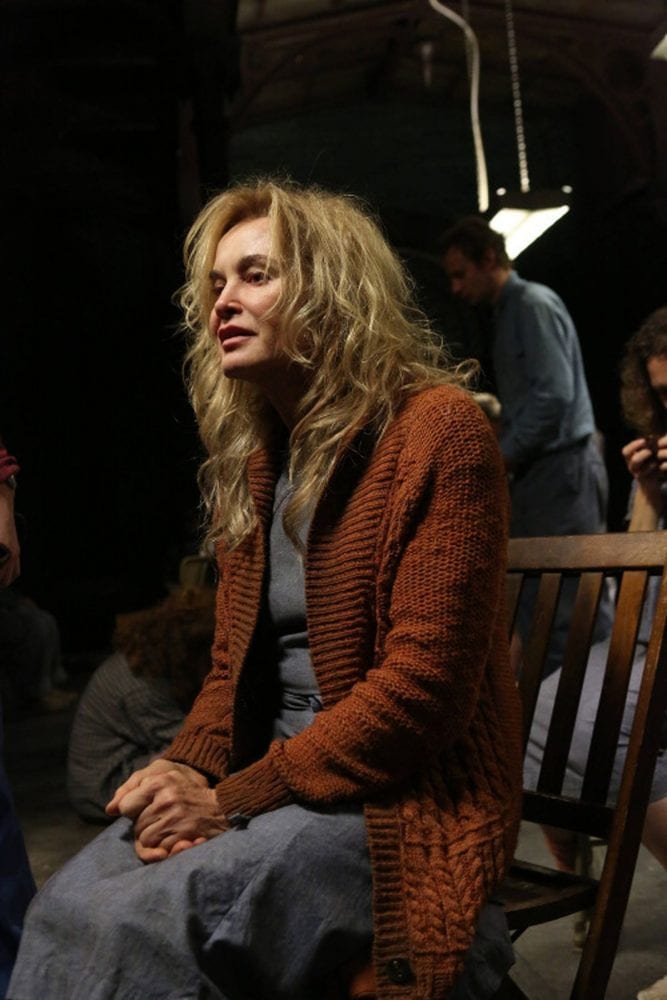
Okay, enough with the warm-up acts. Let’s talk about Sister Jude. Thank the gods for Ryan Murphy’s crush on J-Lange. For a show that is big on being women-punish-y, yay them for the worship of old broads, not afraid to let J-Lange be sexy. I bet back when she was being the ingénue in King Kong’s paw, Lange never would have thought her career would go this way. I love it. Ingénue gets to be a certain age, she gets to cross the line into character actress, and Lange rocks it. Her supporting character in Murder House did enough to show how good she could be, so Murphy built this season (and Freak Show) around her. He even let her sing. Is she great at it? Who cares, she’s Jessica Lange, and she’s a queen (and she sings just fine).
Sister Jude/Judy Martin is a fantastic character and by far the most fleshed out of everyone. She was a singer and a lush back in the day, and when she had her come-to-Jesus, it was literal. Yes, she’s a hard-ass. No, I don’t support all her choices—in fact, she can be a bit of a bully. Jude is a broken human being who turned to God out of desperation, but she honestly believes that “mental illness is the fashionable explanation for sin.” Not an uncommon attitude in 1964, sadly. Besides, if finding God was able to fix Judy Martin’s life, why shouldn’t it be able to fix the rest of the inmates?
Eventually betrayed by Father Timothy and Sister Mary Satan, Judy winds up as one of the inmates herself, treated as badly as she had ever treated the worst of them. The irony isn’t lost on her. Before losing much of herself to the drugs and shock treatments they force upon her, she becomes a kind of den mother to many of the other inmates. She takes better care of them as one of them than she ever did when she was in charge. “I’ll always win against the patriarchal male,” she says. Not in a Murphy show you won’t, Jude. Sorry, but that’s not how he rolls.
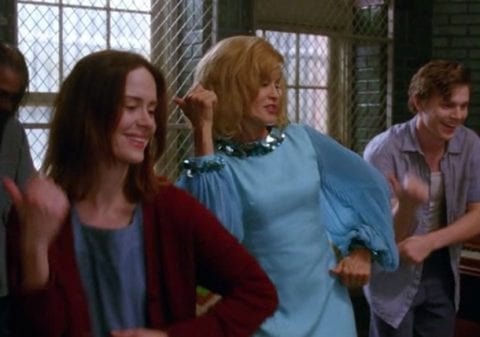
Apparently the whole “Name Game” sequence happened because Murphy remembered a previous conversation with Lange in which she had expressed a desire to sing in something. Yes, Your Majesty. Talk about long-game planning—they start setting up the whole Lana Banana thing (Sister Jude’s snarky nickname for Lana Winters which later becomes a lyric in the song) way back in the pilot, and it doesn’t pay off in a musical number til Episode 10. And say what you want about Sister Jude, but she can’t be all bad when her delusions feature new shoes and fun for everyone else. I’ve personally cosplayed three different Jude looks: drunk, inmate, and “Name Game.”
One of the most beautiful things about any AHS season is the gorgeous chemistry between Jessica Lange and Evan Peters. Also their dialect coaches. But seriously, in “Madness Ends” (the season finale), I would watch the hell out of an entire series of the Jude, Kit Walker, and His Alien Uberkids having family antics. Or really, I would watch the hell out of any show where Lange and Peters got to be the leads of it and do whatever they want. No question.
Anyway, “Madness Ends” (thank you, Tim Minear) is this gorgeous little mini-movie all on its own, in which former inmate Kit “best guy in the world” Walker (Peters) realizes that the only way for him to truly be free of Briarcliff is for him to rescue Sister Jude. She kept him there unjustly and was awful to him, but Kit is a better man than that. “The only way I could leave Briarcliff behind once and for all was to find some way to forgive…find someone to forgive.” He takes Jude home, makes her part of his family, and they mend together.
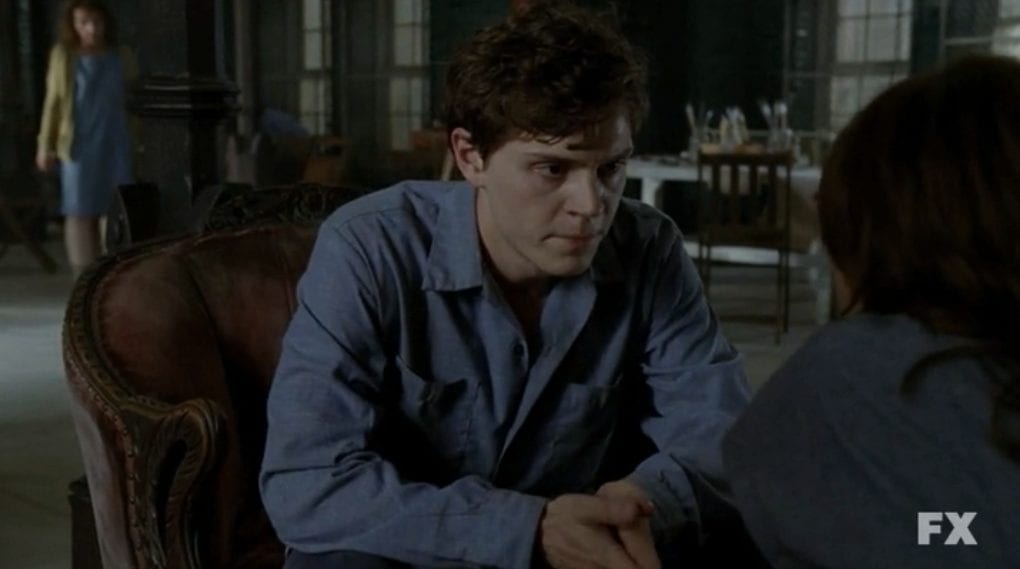
I always think of Kit Walker as the Martha Jones of American Horror Story. He’s a terrific character and a wonderful person (exactly the kind of person our main characters should want to date), but is underappreciated and overlooked because of what came before. No, I am not comparing Rose Tyler to Tate Langdon, whom even Evan Peters has tried to deter fans from thinking of as boyfriend material. But Kit seems to get lost amid the other, more over-the-top characters Peters has gotten to play on the show. He’s kind of the Johnny Depp of the series. American Horror Story has given him opportunity after opportunity to be a character actor, and show off the fact that he’s way more than just a pretty face. The alien storyline might be on the silly side, but at least the aliens appreciated what a terrific, enlightened guy Kit was.
I really shouldn’t diss on the aliens plot too much. It’s one of the things AHS does—once they’ve decided on their premise, it’s like they have a list of relevant-to-that-premise boxes to check, and films that have checked them first. I would guess that they think of these things as homages as opposed to rip-offs. They even give us a musical homage at one point—Episode 11 works in the unmistakable Philip Glass theme we recognize from Candyman. The aliens gave us Fire in the Sky.
Asylum also had The Exorcist, and I really hope Lily Rabe had as much fun with this season as it seemed like she did. She’s another pretty face who gets to show off her acting chops in a series like this, and she’s fantastic. Possessed Sister Mary Eunice is one of the few characters you know is straight-up evil (again, not her fault—it was Mary Eunice’s goodness that made the Devil want her). In a show where you’re never sure who the villain is supposed to be (it’s all dark humanity, complicated and flawed), to have one about whom you can be absolutely sure is kind of comforting.
The exorcism plotline also brought Robin Weigert (Deadwood) into the picture, however briefly, and it is always great to see her. Same goes for Mark Margolis (Better Call Saul), who once again demonstrates what a lucrative career can be made by being talented and ethnically ambiguous. We see a little bit more of Frances Conroy, who is Shachath, the Angel of Death. She shows up with a killer black suit and matching wings, to kiss folk and gently escort them into the afterlife. She’s also got her own agenda, since she makes a point of giving some advice to Father Timothy on how to defeat her “dark cousin” Satan.
I’m always saying that, glad as I am that Sarah Paulson has become a household name thanks to this show, I miss her being funny. My first experience with her was Studio 60 on the Sunset Strip. While I am still waiting for SNL to let her host (that will be as close as I can get to having my beloved Harriet Hayes back), it was lovely to see her and Camille Chen reunited, even if it was only for the Asylum finale.
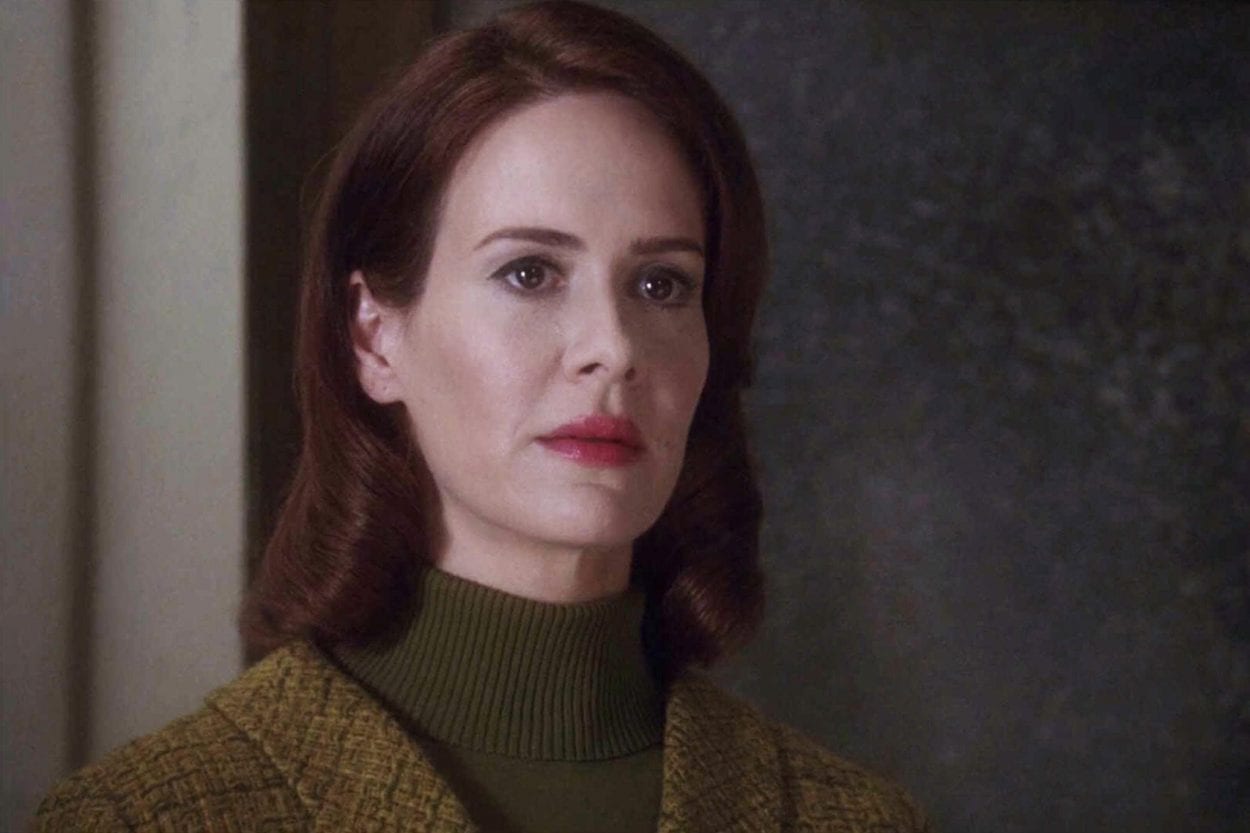
Lana Winters is a badass. She does all kinds of things women aren’t supposed to do in 1964 (including other women), and she comes out on top. You name a trauma, Lana Winters probably lived through it, including having to bear the offspring of the man who abducted and repeatedly raped her (not to mention having killed her lover and a bunch of other women). It always makes me want to cheer when she gets to give Zachary Quinto the full-on Jabba the Hutt treatment and strangle him with the chain he used to keep her prisoner. She not only survives these horrible experiences, she uses them to achieve the fame she’d always wanted.
More than that, she discovers that reporting on these things allows her to cope with the memory of them, even if she has to rewrite history a little. Okay, so she took some liberties in her book on her time with Bloodyface, reporting some things he only talked about, not actually done. I don’t really blame her for that—she’s been through enough. And in the finale, her girlfriend (apparently a famous opera singer) makes a point of reminding Lana of their evening plans: “We have that Sondheim dinner birthday thing.” Talk about highest achievement unlocked.
Oh, American Horror Story: Asylum, how I miss you. Even in Freak Show, which I love love love, the writing wasn’t nearly as cohesive. If Asylum had a fault, it was that there was so much going on, and some of it wasn’t as strong as the rest (I’m looking at you, aliens). The scariest thing in the world is the way humans can behave toward other humans, and while that is a common through-line of every AHS season, this one demonstrates it particularly well (even when said humans are assisted in their evil by aliens or the Devil). It’s hard to watch sometimes, but that’s because it hits home. After all, as Sister Jude says, “if you look in the face of evil, evil’s going to look right back at you.”


Asylum was riveting the humanity or lack of was gripping makes you glad as an epileptic that people think differently now love it horror that’s believable